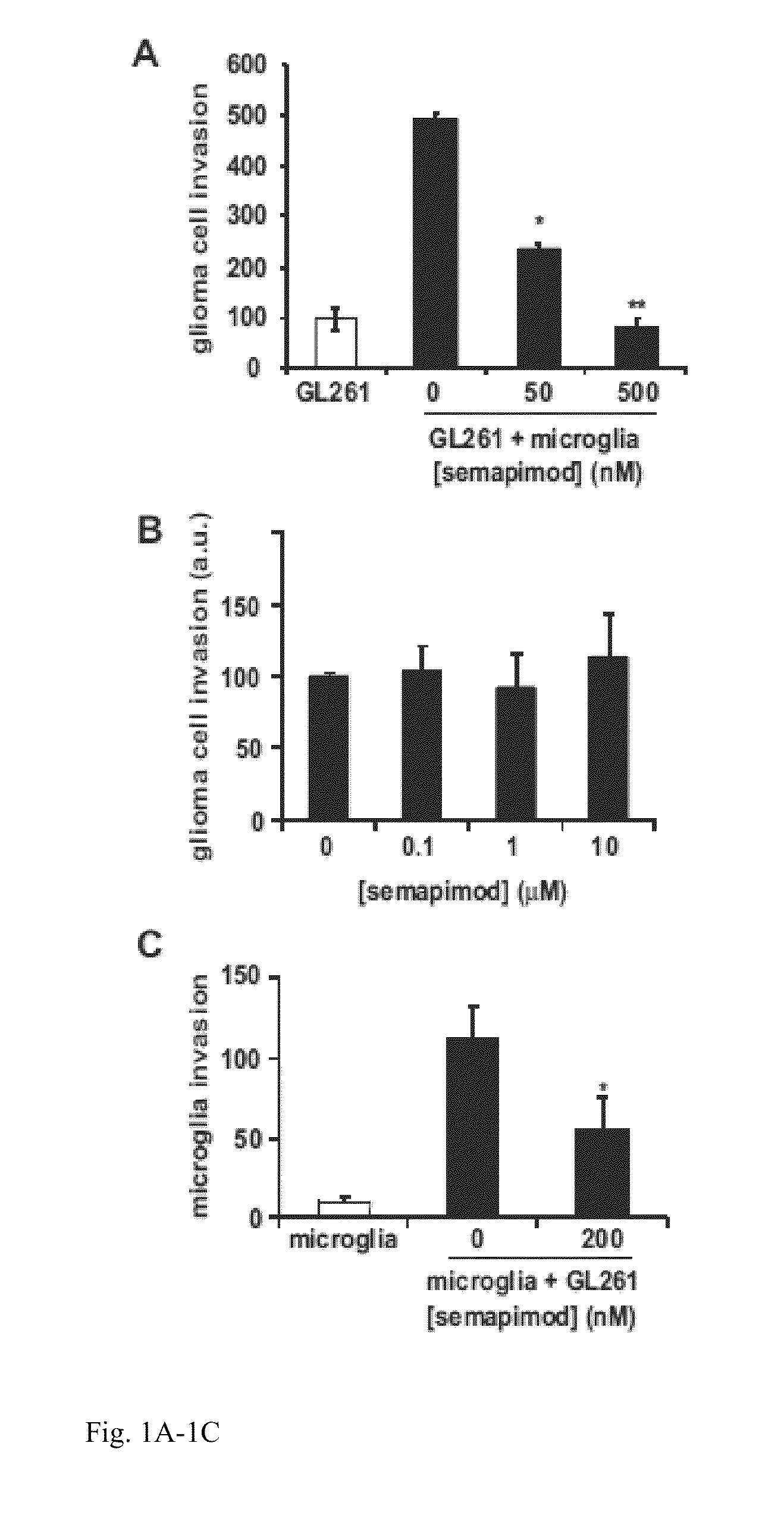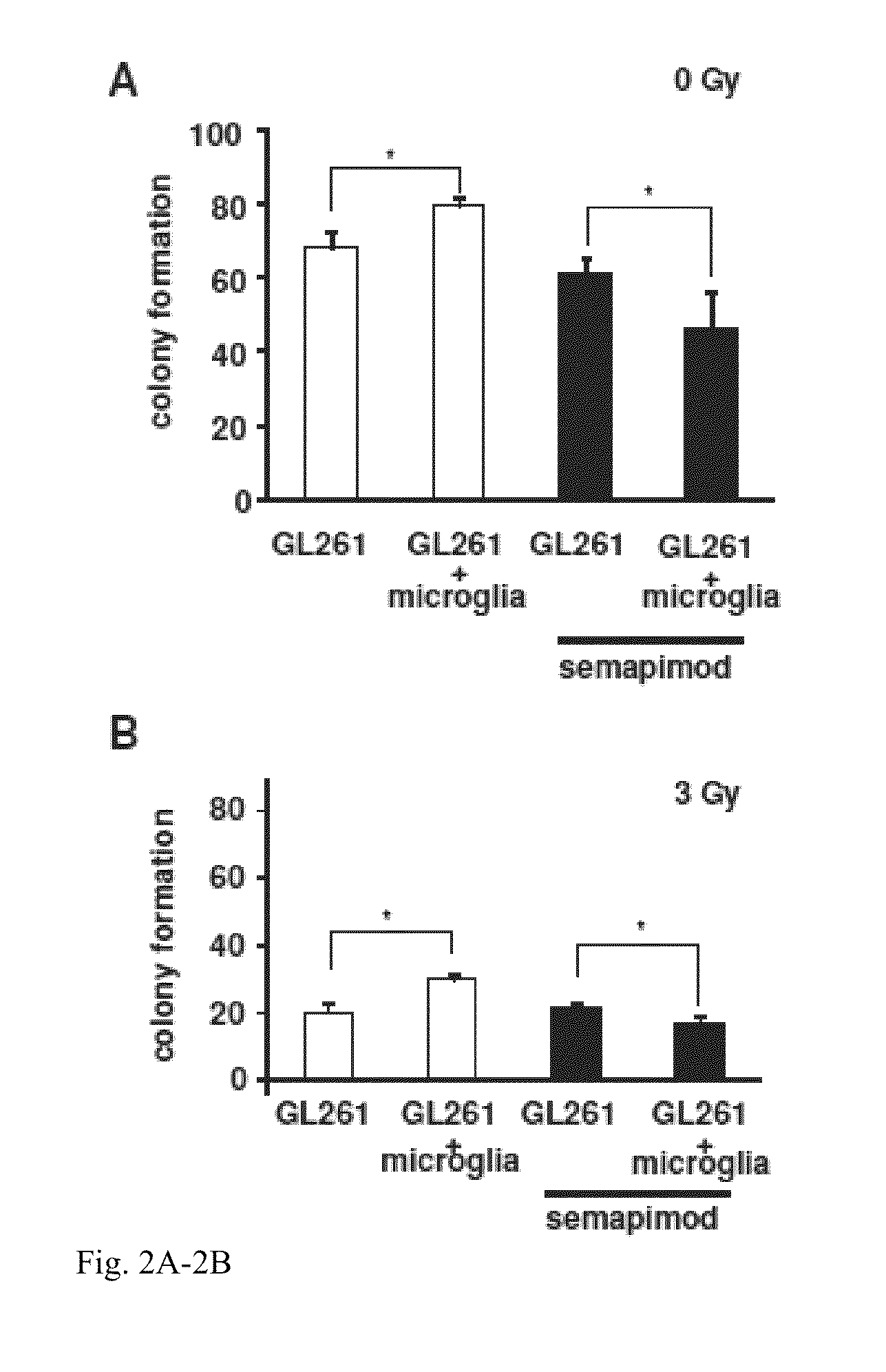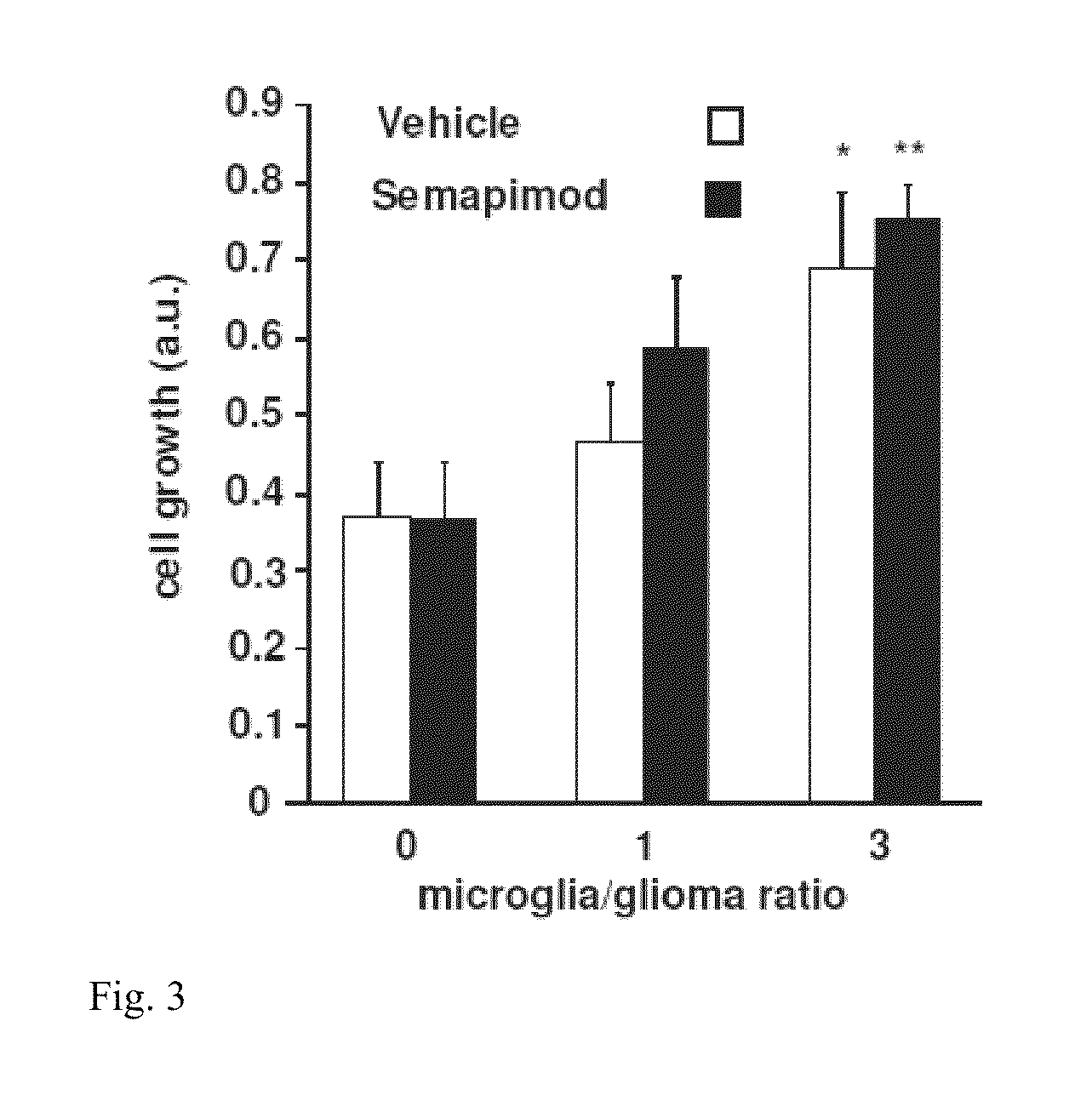Method for treating glioblastomas and other tumors
a glioblastoma and tumor technology, applied in the field of glioblastoma and other tumors, can solve the problems of affecting the treatment effect of glioblastoma patients, and recurrence is certain, so as to prevent or inhibit the metastasis of a solid tumor
- Summary
- Abstract
- Description
- Claims
- Application Information
AI Technical Summary
Benefits of technology
Problems solved by technology
Method used
Image
Examples
example 1
Introduction
[0090]There is mounting evidence that microglia (specialized brain-resident macrophages) play a significant role in the development and progression of glioblastoma tumors. Herein, guanylhydrazones (such as semapimod, a drug that selectively interferes with the function of macrophages and microglia) are investigated as a treatment for astrocytomas.
[0091]It is disclosed that in addition to stimulating glioblastoma cell invasion, microglia also promote glioblastoma cell proliferation and resistance to ionizing radiation (IR) in vitro. It was found that semapimod potently inhibits microglia-stimulated GL261 invasion, without affecting serum-stimulated glioblastoma cell invasion. Semapimod also inhibits microglia-stimulated resistance of glioblastoma cells to IR, but has no significant effect on microglia-stimulated glioblastoma cell proliferation. It was also found that intracranially administered semapimod strongly stimulates animal survival in combination with IR, but has ...
example 2
Introduction
[0120]Tumor-associated macrophages (TAMs) are immune cells that have recently been implicated in promoting tumor growth and invasion. TAMs may play a role in the malignant progression of the childhood soft tissue cancer known as Ewing's Sarcoma through the promotion of angiogenesis, tissue remodeling, immune suppression and cellular proliferation. Current treatment strategies for Ewing's Sarcoma, including surgery, radiation and chemotherapy, target tumor cells to limit disease progression. However, genetic heterogeneity throughout a tumor may lead to therapeutic resistance, causing advanced disease.
[0121]Herein is disclosed a method of inhibiting genetically stable stromal elements within the tumor microenvironment using guanylhydrazones (such as agent CNI-1493) to decrease recurrent and metastatic Ewing's Sarcoma, thus improving the prognosis of patients diagnosed with this disease. Guanylhydrazones (such as agent CNI-1493) may work by de-activating TAMs, thereby decre...
example 3
[0127]The guanylhydrazone CP1213 (a reduced form of CNI-1493) inhibits macrophage-stimulated invasion of 4T1 breast cancer cells. 4T1 cells (4×105) and RAW 264.7 macrophages (1.33×105) were embedded in 50 μl of basement membrane extract in the presence or absence of CP1213 (1 μM), layered in a 24-well transwell and incubated for 28 h. The number of invading 4T1 cells was determined. Data are shown in FIG. 10 and represent the average+ / −SD of 2 independent experiments, each performed in duplicate. The data support a method of treating a tumor, by inhibiting cell invasion processes with guanylhydrazones.
PUM
| Property | Measurement | Unit |
|---|---|---|
| depth | aaaaa | aaaaa |
| thickness | aaaaa | aaaaa |
| thickness | aaaaa | aaaaa |
Abstract
Description
Claims
Application Information
 Login to View More
Login to View More - R&D
- Intellectual Property
- Life Sciences
- Materials
- Tech Scout
- Unparalleled Data Quality
- Higher Quality Content
- 60% Fewer Hallucinations
Browse by: Latest US Patents, China's latest patents, Technical Efficacy Thesaurus, Application Domain, Technology Topic, Popular Technical Reports.
© 2025 PatSnap. All rights reserved.Legal|Privacy policy|Modern Slavery Act Transparency Statement|Sitemap|About US| Contact US: help@patsnap.com



